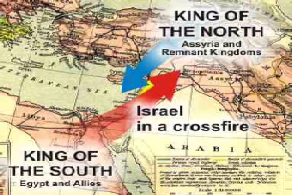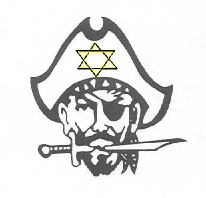|
PART 1 T O P I C |
|
|
|
|
|
|
|
|
|
|
|
|
|
|
|
|
|
|
JewishWikipedia.info
_
THE
INCREDIBLE
STORY OF THE JEWISH PEOPLE
THE
INCREDIBLE
STORY OF THE JEWISH PEOPLE



CHILDREN OF THE MIDDLE AGES (BBC)
Phillip Camarillo
2017 (1.12.40)
MEDIEVAL LIVES
BIRTH, MARRIAGE, DEATH (BBC)
1 A GOOD BIRTH -
More Sense and Sensibility 2018 (58.52)
(Text is from a previous
BBC version)
For a medieval woman approaching the moment of labour and birth, there were no antiseptics to ward off infection or anaesthetics to deal with pain. Historian Helen Castor reveals how this was one of the most dangerous moments a medieval woman would ever encounter, with some aristocratic and royal women giving birth as young as 13. Birth took place in an all-female environment and the male world of medicine was little help to a woman in confinement. It was believed that the pains of labour were the penalty for the original sin of humankind - so, to get through them, a pregnant woman needed the help of the saints and the blessing of God himself.
MEDIEVAL LIVES
BIRTH, MARRIAGE, DEATH (BBC)
2 A GOOD MARRIAGE -
More Sense and Sensibility 2018
(59.01)
(Text is from a previous
BBC version)
Unlike birth and death, which are inescapable facts of life, marriage is rite of passage made by choice and in the Middle Ages it wasn't just a choice made by bride and groom - they were often the last pieces in a puzzle, put together by their parents, with help from their family and friends, according to rules laid down by the Church.
Helen Castor reveals how in the Middle Ages marriage was actually much easier to get into than today - you could get married in a pub or even a hedgerow simply by exchanging words of consent - but from the 12th century onwards the Catholic Church tried to control this conjugal free-for-all. For the Church marriage was a way to contain the troubling issue of sex, but, as the film reveals, it was not easy to impose rules on the most unpredictable human emotions of love and lust.
MEDIEVAL LIVES
BIRTH, MARRIAGE, DEATH (BBC)
3 A GOOD DEATH -
More Sense and Sensibility 2018
(58.59)
(Text is from a previous
BBC version)
Most of the time we try not to think about death, but the people of the Middle Ages didn't have that luxury. Death was always close at hand, for young and old, rich and poor - even before the horrors of the Black Death, which killed millions in a few short months.
However, for the people of the Middle Ages death wasn't an end but a doorway to everlasting life. The Church taught that an eternity spent in heaven or hell was much more important than this life's fleeting achievements and there was much you could do to prepare for the next life in this one.
As historian Helen Castor reveals, how to be remembered - and remembering your loved ones - shaped not only the worship of the people of the Middle Ages but the very buildings and funding of the medieval Church itself.
MEDIEVAL SOCIETY
Ryan Reeves, 2014 (33.20)
Assistant Professor of
Historical Theology
at Gordon-Conwell Theological Seminary
MEDIEVAL LIFE, DEATH, AND MARRIAGE
Ryan Reeves, 2014 (38.34)
Assistant Professor of
Historical Theology
at Gordon-Conwell Theological Seminary
JEWISH-CHRISTIAN DISPUTATIONS
IN THE MIDDLE AGES
This Week in Jewish History
Henry Abramson (7.00)
CRASH COURSE IN JEWISH HISTORY:
SESSION 13 -
CRUSADES, LIBELS & BLACK DEATH
2011 (6.115)
Avraham Goldhar explains the major events that were part of the Christian persecution of the Jews during the Middle Ages.
JEWS IN THE MEDIEVAL ECONOMY
(Essential Lectures in Jewish History)
Dr Henry Abramson, 2014 (20.26)
MEDIEVAL ANTISEMITISM
(Essential Lectures in Jewish History)
Dr Henry Abramson, 2014 (24.23)
this period looks at the ideological basis for the false charges
of ritual murder, blood libel, and desecration of the host,
ending with a discussion of the
Judensau image.
DISPUTATIONS
More Detail Spain
Apostate Jews, many of whom had studied the Talmud to curry favour with the Church, suggested a public disputation, to show how wrong the Jews were. Then the Jewish community might convert
MAJOR DISPUTATIONS
1240 – the Disputation of Paris
1263 – the Disputation of Barcelona
1375 – public Dsputations at Burgos and Avila
1413 – the Disputation of Tortosa, Spain
THE PSYCHOLOGY
OF MEDIEVAL ANTI-SEMITISM
Prof. Kenneth Stow, 2012 (1.22.45)
JEWISH HISTORY
IN THE SIXTEENTH CENTURY
Dr Henry Abramson, 2015 (25.59)
The Jewish people experienced dramatic changes in the sixteenth century that reverberate to this day. This lecture discusses three aspects of this century in particular:
1) the demographic upheavals associated with the expulsions from Spain and Portugal as well as the Ashkenazic migration,
2) the impact of the disruptive technology of printing, and
3) the ramifications of the Safed (Tsfat) circle.
THE CRUSADES CRESCENT
AND THE CROSS. PT 1 OF 2
New Horizon 2011 (1.29.26)
The First Crusade was the most successful from a military point of view. Accounts of this action are shocking. For example, historian Raymond of Agiles described the capture of Jerusalem by the Crusaders in 1099:
Some of our men cut off the heads of their enemies; others shot them with arrows, so that they fell from the towers; others tortured them longer by casting them into the flames. Piles of heads, hands and feet were to be seen in the streets of the city. It was necessary to pick one's way over the bodies of men and horses. But these were small matters compared to what happened at the temple of Solomon, a place where religious services ware ordinarily chanted. What happened there? If I tell the truth, it will exceed your powers of belief. So let it suffice to say this much at least, that in the temple and portico of Solomon, men rode in blood up to their knees and bridle reins.
http://gbgm-umc.org/umw/bible/crusade...
What was the legacy of the Crusades? Williston Walker et. al. observes:
Viewed in the light of their original purpose, the Crusades were failures. They made no permanent conquests of the Holy Land. They did not retard the advance of Islam. Far from aiding the Eastern Empire, they hastened its disintegration. They also revealed the continuing inability of Latin Christians to understand Greek Christians, and they hardened the schism between them. They fostered a harsh intolerance between Muslims and Christians, where before there had been a measure of mutual respect. They were marked, and marred, by a recrudescence of anti-Semitism....
There were seven major Crusades. They began in 1095 with Pope Urban II's famous speech (see below) and ended in 1291 when Acre, the last Latin holding was lost. They are summarised opposite.
THE CRUSADES CRESCENT
AND THE CROSS. PT 2 OF 2
TheUnparalleledOne (14.59)
‘MAJOR CRUSADES’
The first, 1095-1099, called by Pope Urban II and led by Peter the Hermit, Walter the Penniless, Godfrey of Bouillon, Baldwin and Eustace of Flanders, and others
The second, 1147-49, headed by King Louis VII who was enlisted by Bernard of Clairvaux, was a disastrous failure, including the loss of one of the four Latin Kingdoms, the Duchy of Edessa;
The third, 1188-92, proclaimed by Pope Gregory VIII in the wake of the catastrophe of the second crusade, was conducted by Emperor Frederick Barbarossa, King Philip Augustus of France and King Richard "Coeur-de-Lion" of England;
The fourth, 1202-1204 attack and sacking of Constantinople
Childrens Crusade, 1212 European children and adults hoped to go on crusade. Many reached Lombardy others Genoa. The few who reached Rome had their crusade vows dispensed by Innocent III. They never reached the middle east.
The fifth, 1217-1221; an attempt to take back the Holy Land by first conquering the powerful Ayyubid state in Egypt.
The sixth, 1217-1221; capture of Jerusalem for a few months
The seventh, 1248-50 the last major expedition for the recovery of the Holy Land actually to reach the Near East.
‘MINOR CRUSADES’
The eighth 1270 launched by Louis IX of France against Tunis in 1270. considered a failure after Louis died shortly after arriving in Tunisia with his disease-ridden army and their return to Europe.
The ninth, 1271 -72. launched by the future Edward I of England. He stayed in Acre for a year and then returned home.
|
|
POPE URBAN II ORDERS FIRST CRUSADE
History
On November 27, 1095, Pope Urban II makes perhaps the most influential speech of the Middle Ages, giving rise to the Crusades by calling all Christians in Europe to war against Muslims in order to reclaim the Holy Land, with a cry of “Deus vult!” or “God wills it!”
Born Odo of Lagery in 1042, Urban was a protege of the great reformer Pope Gregory VII. Like Gregory, he made internal reform his main focus, railing against simony (the selling of church offices) and other clerical abuses prevalent during the Middle Ages. Urban showed himself to be an adept and powerful cleric, and when he was elected pope in 1088, he applied his statecraft to weakening support for his rivals, notably Clement III.
By the end of the 11th century, the Holy Land—the area now commonly referred to as the Middle East—had become a point of conflict for European Christians. Since the 6th century, Christians frequently made pilgrimages to the birthplace of their religion, but when the Seljuk Turks took control of Jerusalem, Christians were barred from the Holy City. When the Turks then threatened to invade the Byzantine Empire and take Constantinople, Byzantine Emperor Alexius I made a special appeal to Urban for help. This was not the first appeal of its kind, but it came at an important time for Urban. Wanting to reinforce the power of the papacy, Urban seized the opportunity to unite Christian Europe under him as he fought to take back the Holy Land from the Turks.
At the Council of Clermont, in France, at which several hundred clerics and noblemen gathered, Urban delivered a rousing speech summoning rich and poor alike to stop their in-fighting and embark on a righteous war to help their fellow Christians in the East and take back Jerusalem. Urban denigrated the Muslims, exaggerating stories of their anti-Christian acts, and promised absolution and remission of sins for all who died in the service of Christ.
Urban’s war cry caught fire, mobilizing clerics to drum up support throughout Europe for the crusade against the Muslims. All told, between 60,000 and 100,000 people responded to Urban’s call to march on Jerusalem. Not all who responded did so out of piety: European nobles were tempted by the prospect of increased land holdings and riches to be gained from the conquest. These nobles were responsible for the death of a great many innocents both on the way to and in the Holy Land, absorbing the riches and estates of those they conveniently deemed opponents to their cause. Adding to the death toll was the inexperience and lack of discipline of the Christian peasants against the trained, professional armies of the Muslims. As a result, the Christians were initially beaten back, and only through sheer force of numbers were they eventually able to triumph.
Urban died in 1099, two weeks after the fall of Jerusalem but before news of the Christian victory made it back to Europe. His was the first of seven major military campaigns fought over the next two centuries known as the Crusades, the bloody repercussions of which are still felt today. Urban was beatified by the Roman Catholic Church in 1881.
MEDIEVAL ANTISEMITISM:
AN INTRODUCTION ~
Dr Lackner
The Study of Antiquity and the Middle Ages
2019 (58.30)
